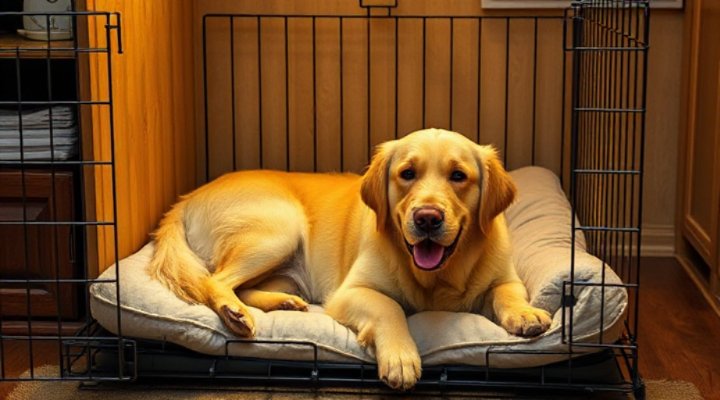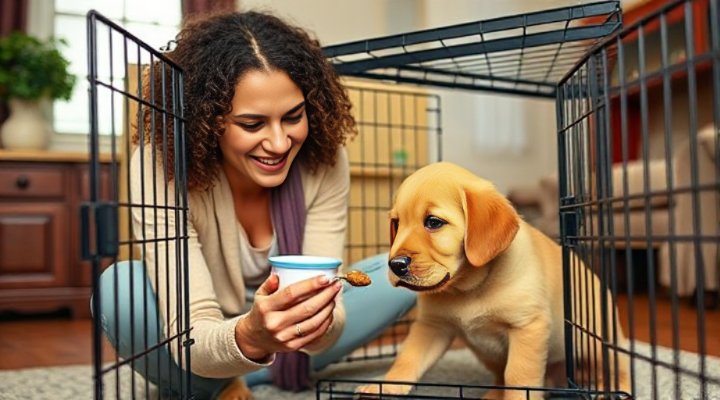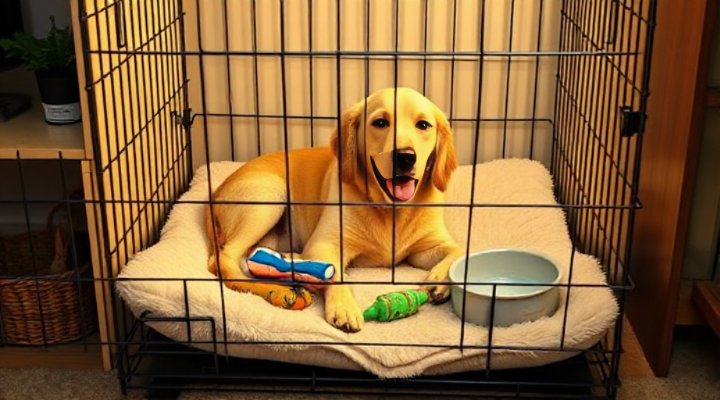Cage training, often referred to as crate training, is one of the most effective ways to provide your dog with a safe haven while teaching them good behavior. Above all, it’s important to remember that a crate should never be used as punishment, but rather as a cozy den where your pup can relax.

Why Cage Training is Beneficial for Dogs
Dogs are naturally den animals, which means they instinctively seek out small, enclosed spaces for security. Therefore, a properly introduced crate becomes their personal safe space. For instance, it can help with:
- House training (dogs naturally avoid soiling their sleeping area)
- Preventing destructive behavior when unsupervised
- Creating a calm environment during travel
- Providing a recovery space after medical procedures
Meanwhile, if you’re also working on helping a rescue dog adjust, crate training can be particularly beneficial for establishing routine and security.

How to Introduce Your Dog to Crate Training
Firstly, choose the right crate size – it should be large enough for your dog to stand, turn around, and lie down comfortably. Subsequently, follow these steps for a positive introduction:
- Place the crate in a busy family area with the door open
- Make it inviting with soft bedding and favorite toys
- Use treats to encourage exploration (toss them near and eventually inside)
- Feed meals near then inside the crate
- Gradually increase time spent in the crate with the door closed
According to the American Veterinary Medical Association, this gradual approach helps prevent anxiety. Similarly, our guide on long lead training emphasizes the importance of patience in dog training.

Common Cage Training Mistakes to Avoid
While crate training is straightforward, some common pitfalls can hinder progress. For example:
- Using the crate as punishment (creates negative associations)
- Leaving the dog crated too long (maximum 4-5 hours for adults)
- Choosing the wrong crate size (too large defeats house training benefits)
- Rushing the process (each dog adapts at their own pace)
On the other hand, proper crate training can complement other training methods like those in our guide to stop jumping behavior.

Making the Crate a Happy Place
To ensure your dog loves their crate, consider these tips:
- Use special crate-only treats and toys
- Cover the crate with a light blanket for a den-like feel
- Keep it clean and comfortable
- Practice short departures to prevent separation anxiety
In conclusion, cage training done right creates a win-win situation – your dog gains a safe space, and you gain peace of mind knowing they’re secure and well-behaved. For more specialized training, check out our article on choosing the right trainer.
Related Keywords: dog crate training, how to crate train a puppy, best dog crates, crate training schedule, dog anxiety solutions

